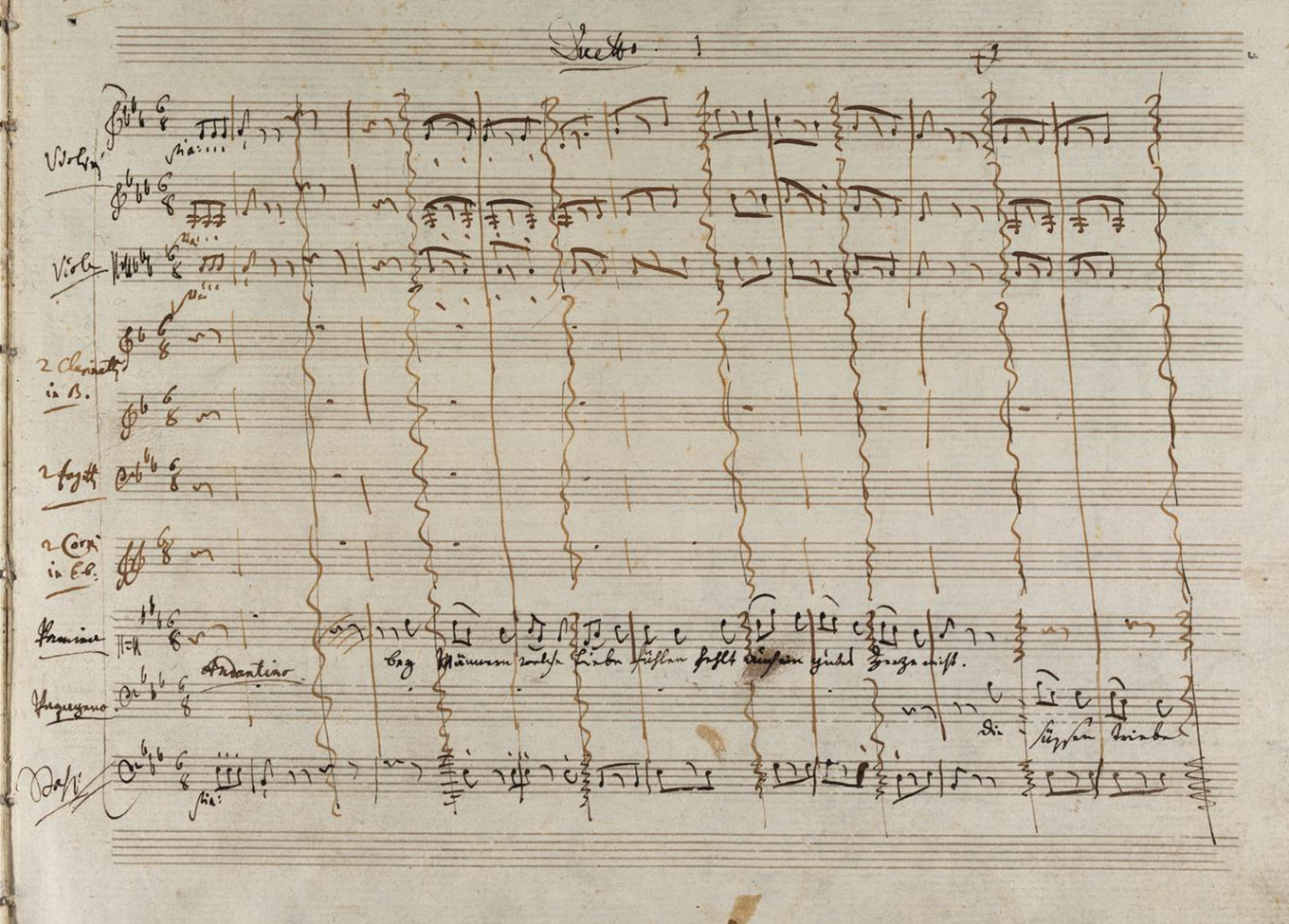
Nerding out: Mozart's blurry barlines
EditorialWant to see something neat?
Here’s a page out of Mozart’s manuscript score of Die Zauberflöte (yes, the whole thing is available on imslp.com!, specifically from the Pamina/Papageno duet, “Bei Männern”. Have a look:

All those squiggly lines that he wrote are erased bar lines. The duet is in 6⁄8 time, and in this version, Mozart has the downbeats lined up with words like “Männern” and “Liebe”; they’re good words for downbeats, but Mozart apparently thought the pulse of this duet was a bit heavy-handed. So, he moved the all of the barlines over by half a measure, and the effect is pretty amazing.
This duet is terrifyingly bare in its accompaniment, and it’s easy for this to schlep, and before Mozart moved the bar lines, it would have been even easier. By placing the rhythmic downbeats on either side of the linguistic beats, rather than in unison with them, he helps the singers keep entire phrases alive and moving forward. It’s worth grabbing a score (in case this one’s a little tricky or read) and trying it out for yourself, both ways.
*One other neat detail: after the first four staccato notes from the strings, we’re used to hearing two cute little woodwind chords. In this manuscript, the chords aren’t there, there are simply three (long) beats of anticipatory silence. I kind of love it.
Like I said, the full manuscript score of Die Zauberflöte is up on IMSLP cadenza Mozart wrote for the three ladies.


Comments